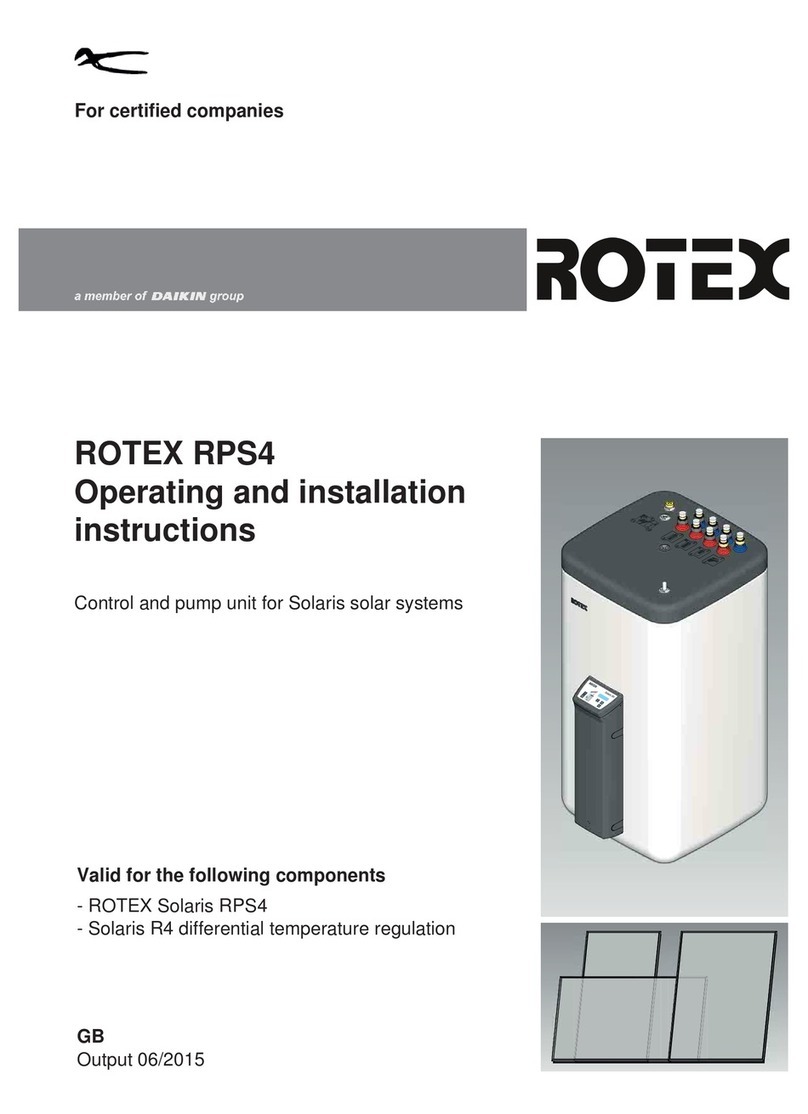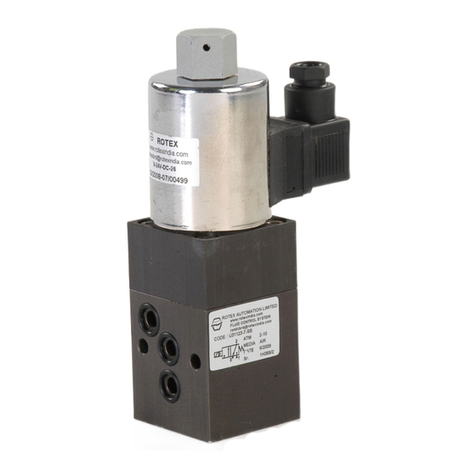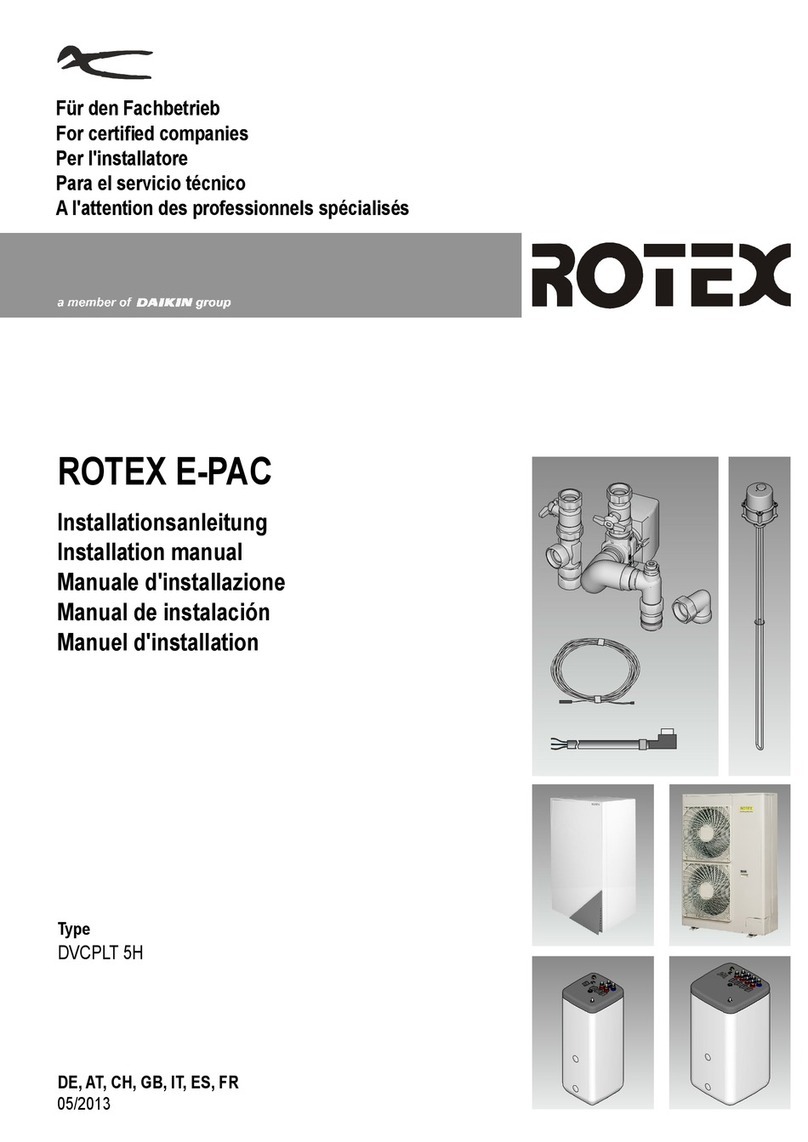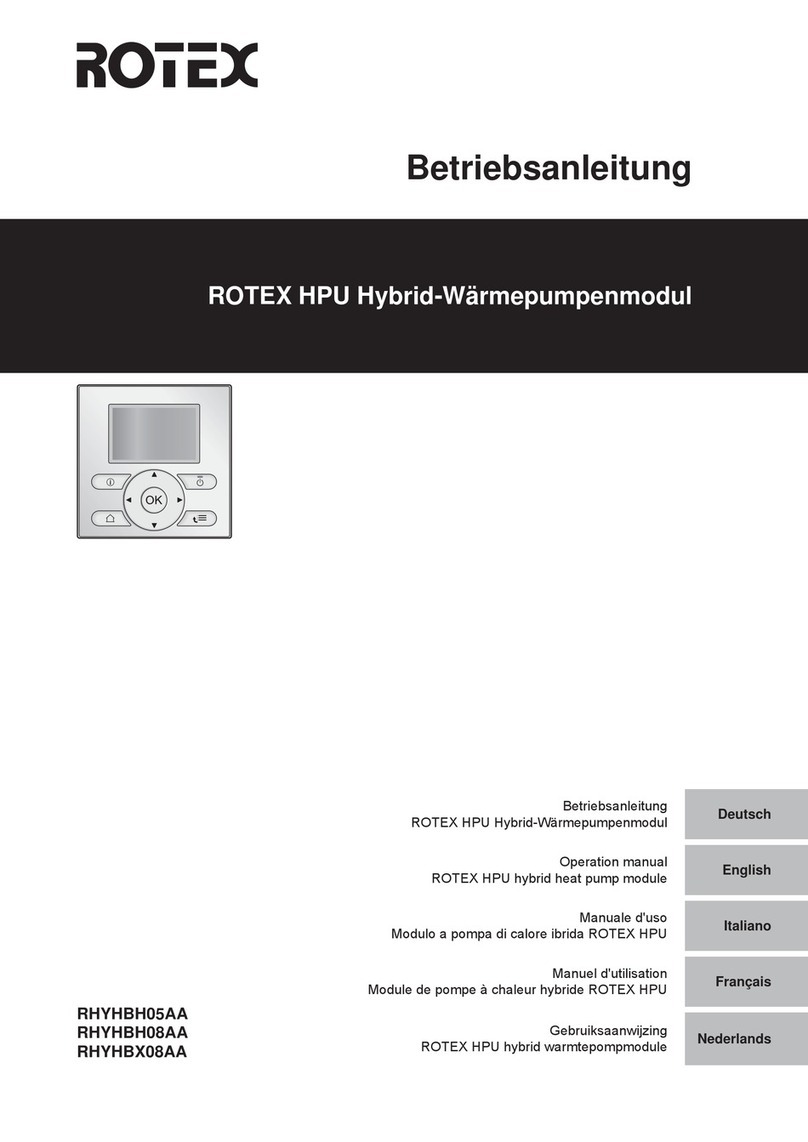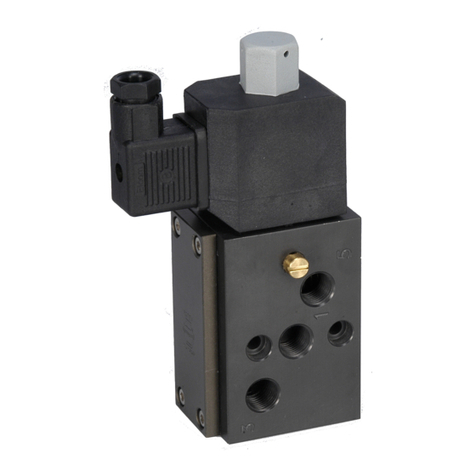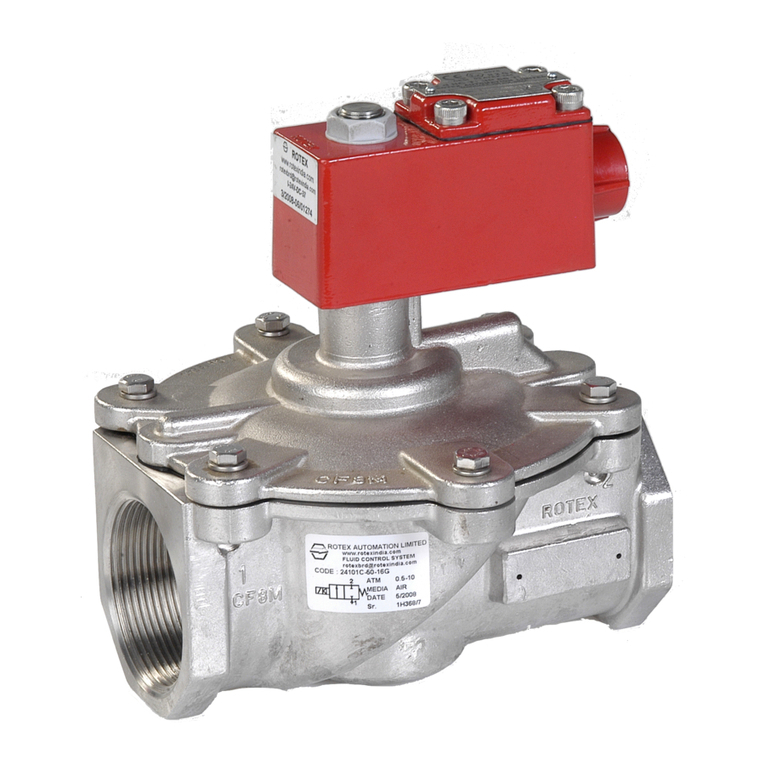List of contents
2FA ROTEX RoCon HP - 06/2015
1 Safety . . . . . . . . . . . . . . . . . . . . . . . . . . . . . . 4
1.1 Observing instructions . . . . . . . . . . . . . . . . . . . . 4
1.2 Warning signs and explanation of symbols . . . . 4
1.3 Avoid danger . . . . . . . . . . . . . . . . . . . . . . . . . . . 5
1.4 Proper use . . . . . . . . . . . . . . . . . . . . . . . . . . . . . 5
2 Product description. . . . . . . . . . . . . . . . . . . 6
3 Operation . . . . . . . . . . . . . . . . . . . . . . . . . . . 7
3.1 General . . . . . . . . . . . . . . . . . . . . . . . . . . . . . . . 7
3.2.1 Display . . . . . . . . . . . . . . . . . . . . . . . . . . . . . . . . . .7
3.2.2 Operating elements. . . . . . . . . . . . . . . . . . . . . . . . .8
3.3 Operating concept . . . . . . . . . . . . . . . . . . . . . . . 9
3.4 Basic functions and operating modes . . . . . . . 10
3.4.1 System information (Info) . . . . . . . . . . . . . . . . . . .10
3.4.2 Setting the operating mode . . . . . . . . . . . . . . . . . .12
3.4.3 Temperature setting Daytime room temperature .14
3.4.4 Temperature setting Economy mode . . . . . . . . . .14
3.4.5 Temperature setting hot water generation . . . . . .14
3.4.6 Unscheduled hot water generation . . . . . . . . . . . .14
3.4.7 Switching time program. . . . . . . . . . . . . . . . . . . . .15
3.4.8 System settings. . . . . . . . . . . . . . . . . . . . . . . . . . .17
3.4.9 Terminal function. . . . . . . . . . . . . . . . . . . . . . . . . .17
3.4.10 Quite Mode . . . . . . . . . . . . . . . . . . . . . . . . . . . . . .18
3.4.11 SMART GRID (SG) . . . . . . . . . . . . . . . . . . . . . . . .18
3.5 Special functions . . . . . . . . . . . . . . . . . . . . . . . 19
3.5.1 Manual Operation . . . . . . . . . . . . . . . . . . . . . . . . .19
3.5.2 Reference run 3-way diverter valve . . . . . . . . . . .20
3.6 Special system settings . . . . . . . . . . . . . . . . . . 20
3.6.1 Access Rights (Technician password) . . . . . . . . .20
3.6.2 Heat curve. . . . . . . . . . . . . . . . . . . . . . . . . . . . . . .21
3.6.3 Cooling characteristic curve . . . . . . . . . . . . . . . . .22
3.6.4 Weather-controlled flow temperature regulation . .22
3.6.5 Frost protection function . . . . . . . . . . . . . . . . . . . .23
3.6.6 Interlink function . . . . . . . . . . . . . . . . . . . . . . . . . .23
3.6.7 Additional alternative heat generator . . . . . . . . . .24
3.6.8 Heating support. . . . . . . . . . . . . . . . . . . . . . . . . . .24
3.6.9 Special function: Switching contacts . . . . . . . . . . .24
3.6.10 Air Purge . . . . . . . . . . . . . . . . . . . . . . . . . . . . . . . .25
3.6.11 Legionella protection . . . . . . . . . . . . . . . . . . . . . . .25
3.6.12 Reset to factory settings (Reset). . . . . . . . . . . . . .26
3.6.13 Screed Program . . . . . . . . . . . . . . . . . . . . . . . . . .26
3.6.14 Relay Test . . . . . . . . . . . . . . . . . . . . . . . . . . . . . . .29
3.6.15 Settings for optional circulation pump . . . . . . . . . .29
3.6.16 Remote control via Internet . . . . . . . . . . . . . . . . . .29
4 Initial start-up. . . . . . . . . . . . . . . . . . . . . . . 30
4.1 Fundamental aspects of the IDs and
authorisations in the RoCon system . . . . . . . . 30
4.2 Operator guiding during the first
commissioning and for system extensions. . . . 31
4.3 Starting up the ROTEX HPSU compact. . . . . . 32
4.3.1 Allocating the terminal ID on the control unit
RoCon B1 of the ROTEX HPSU compact. . . . . . .32
4.4 Commissioning optional RoCon system
components . . . . . . . . . . . . . . . . . . . . . . . . . . . 32
4.4.1 Mixer module RoCon M1 . . . . . . . . . . . . . . . . . . .32
4.4.2 Room station RoCon U1 . . . . . . . . . . . . . . . . . . .33
4.4.3 Allocating mixing module RoCon M1 to
a heat generator . . . . . . . . . . . . . . . . . . . . . . . . . .34
4.4.4 Master-RoCon function . . . . . . . . . . . . . . . . . . . . .34
4.4.5 Caretaker function. . . . . . . . . . . . . . . . . . . . . . . . .34
5 Parameter Overview . . . . . . . . . . . . . . . . . .35
5.1 For first commissioning or resetting to
factory settings . . . . . . . . . . . . . . . . . . . . . . . . 35
5.2 After first commissioning / after successful
basic configuration . . . . . . . . . . . . . . . . . . . . . 36
5.2.1 Rotary switch setting: Configuration . . . . . . . . . . 36
5.2.2 Rotary switch setting: DHW Install . . . . . . . . . . . 37
5.2.3 Rotary switch setting: Operating Mode . . . . . . . 37
5.2.4 Rotary switch setting: Set Temp Day . . . . . . . . . 37
5.2.5 Rotary switch setting: Set Temp Night . . . . . . . . 37
5.2.6 Rotary switch setting: DHW Set Temp . . . . . . . . 37
5.2.7 Rotary switch setting: Time Program . . . . . . . . . 37
5.2.8 Rotary switch setting: Remote Param . . . . . . . . 37
5.2.9 Rotary switch setting: Info . . . . . . . . . . . . . . . . . 37
5.2.10 Exit button: Sonderfunktion . . . . . . . . . . . . . . . . . 37
5.3 Parameter levels for the RoCon M1 mixer
module . . . . . . . . . . . . . . . . . . . . . . . . . . . . . . 37
5.3.1 Rotary switch setting: Info . . . . . . . . . . . . . . . . . 37
5.3.2 Rotary switch setting: Operating Mode . . . . . . . 37
5.3.3 Rotary switch setting: Set Temp Day . . . . . . . . . 37
5.3.4 Rotary switch setting: Set Temp Night . . . . . . . . 37
5.3.5 Rotary switch setting: DHW Set Temp . . . . . . . . 37
5.3.6 Rotary switch setting: DHW Install . . . . . . . . . . . 37
5.3.7 Rotary switch setting: Time Program . . . . . . . . . 38
5.3.8 Rotary switch setting: Remote Param . . . . . . . . 38
5.3.9 Rotary switch setting: Configuration . . . . . . . . . . 38
6 Parameter settings . . . . . . . . . . . . . . . . . . .39
6.1 Explanation of the parameter tables . . . . . . . . 39
6.2 Rotary switch setting: Configuration . . . . . . . . 39
6.2.1 Level "Setup". . . . . . . . . . . . . . . . . . . . . . . . . . . . 39
6.2.2 Level "System Configuration" . . . . . . . . . . . . . . . 42
6.2.3 Level "HC Configuration". . . . . . . . . . . . . . . . . . . 43
6.2.4 Level "DHW Configuration" . . . . . . . . . . . . . . . . . 45
6.3 Rotary switch setting: DHW Install . . . . . . . . . 45
6.4 Rotary switch setting: Operating Mode . . . . . 45
6.5 Rotary switch setting: Set Temp Day . . . . . . . 46
6.6 Rotary switch setting: Set Temp Night . . . . . . 46
6.7 Rotary switch setting: DHW Set Temp . . . . . . 46
6.8 Rotary switch setting: Time Program . . . . . . . 47
6.9 Rotary switch setting: Remote Param . . . . . . 47
6.10 Rotary switch setting: Info . . . . . . . . . . . . . . . 48
6.11 Exit button: Sonderfunktion . . . . . . . . . . . . . . . 48
6.12 Parameter level "Basic Configuration" . . . . . . 49
6.13 Parameter levels for the RoCon M1
mixer module. . . . . . . . . . . . . . . . . . . . . . . . . . 49
6.13.1 Rotary switch setting: Configuration,
level "Setup" . . . . . . . . . . . . . . . . . . . . . . . . . . . . 50
6.13.2 Rotary switch setting: Configuration,
level "Mixer Config" . . . . . . . . . . . . . . . . . . . . . . . 51
7 Errors, malfunctions and messages . . . . .53
7.1 Recognising errors, correcting malfunctions . . 53
7.1.1 Current fault display . . . . . . . . . . . . . . . . . . . . . . 53
7.1.2 Read Protocol . . . . . . . . . . . . . . . . . . . . . . . . . . . 53
7.1.3 Troubleshooting. . . . . . . . . . . . . . . . . . . . . . . . . . 53
7.2 Emergency operation . . . . . . . . . . . . . . . . . . . 54
7.3 Malfunctions and fault codes. . . . . . . . . . . . . . 54
8 Glossary. . . . . . . . . . . . . . . . . . . . . . . . . . . .55
